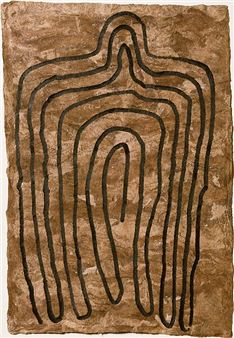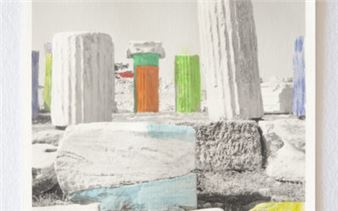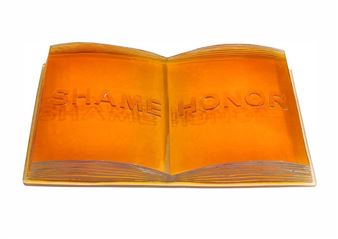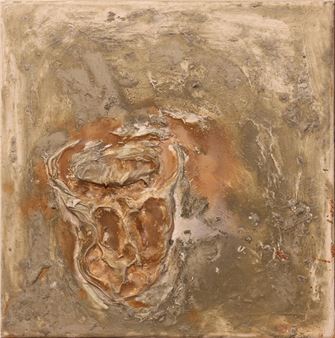Re-Materialized:Â The Stuff That Matters
Kaufmann Repetto is pleased to present Re-Materialized: The stuff that matters, a group exhibition curated by Astrid Welter, spanning across both Milan and New York galleries. This dual-presentation features the work of Lisa Alvarado, Maja Bajevic, Jonathan Baldock, Leda Catunda, Christina Forrer, Jeffrey Gibson, Françoise Grossen, Yee I-lann, Suzanne Jackson, Charlotte Johannesson, Luba KrejÄŤĂ, Maria Lai, Barbara Levittoux-Swiderska, Rodney McMillian, Hana Miletić, MaĹ‚gorzata Mirga Tas, Rosita and Angela Missoni, Dianna Molzan, Margherita Raso, Erin M. Riley, LJ Roberts, and Pae White. This project is in relation to an ongoing research program that Kaufmann Repetto has dedicated to the textile medium. To coincide with the current group show, the New York gallery will also feature a presentation of works by the late Italian textile designer Renata Bonfanti, marking the artist’s first solo exhibition in the United States.
Throughout the past decade, textile-based artworks have found a new currency in the artworld. A proliferation of exhibitions dedicated to this long-overlooked medium has generated an intensification of critical theory, reviewing a variety of viewpoints: the role of feminal practitioners and their refusal of outdated, gendered expectations; the bias of craft versus fine art; the relation of textiles to cultural identity, socioeconomic codes, and societal coexistence, amongst countless others. Many of these investigations are at the core of the practices of the artists featured in Re-Materialized: The stuff that matters, presenting a spectrum of textile-based vocabularies.
The specific, tactile sensuousness of textile work fulfills our desire for re-materialized experiences. Now stuck somewhere between the physical and the virtual world, we are continuously witnessing the relentless digitalization of humanity, including sensory interactions. The more we realize the consequences of what is in fact dematerialization, the more urgency forms for resistance, together with the desire for a tangible, somatic connection to the world that surrounds us. If taken literally, we may begin to grasp the notion that nothing encompasses us more intimately through our bodily existence than cloth, one of the world’s most ancient cultural materials.
The title of the exhibition pays homage to Lucy Lippard and Seth Siegelaub, both pioneering curators and writers who in their early careers contributed to the definition and emergence of conceptual art. “Re-materialization” takes a playful twist on Lippard’s seminal text, “The dematerialization of art” (1968), an essay that has since become a cornerstone in art criticism and theory. “The stuff that matters” refers to Siegelaub’s decades-long bibliographic research on textiles and their social and economic history in the world, which eventually led to the activities of his stichting egress foundation. Despite their different trajectories, both scholars and their ideologies have been central to contemporary art discourse, defying “the sacrosanct ivory walls and heroic, patriarchal mythologies” (Lippard, 1973). With the newly gained prevalence for textile art and the boundless examination of these handcrafted works as powerful carriers of a political and societal materiality, Lippard’s and Siegelaub’s legacy continues.
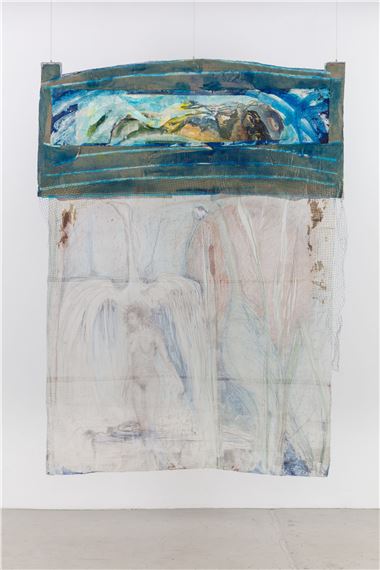
Recommended for you
Kaufmann Repetto is pleased to present Re-Materialized: The stuff that matters, a group exhibition curated by Astrid Welter, spanning across both Milan and New York galleries. This dual-presentation features the work of Lisa Alvarado, Maja Bajevic, Jonathan Baldock, Leda Catunda, Christina Forrer, Jeffrey Gibson, Françoise Grossen, Yee I-lann, Suzanne Jackson, Charlotte Johannesson, Luba KrejÄŤĂ, Maria Lai, Barbara Levittoux-Swiderska, Rodney McMillian, Hana Miletić, MaĹ‚gorzata Mirga Tas, Rosita and Angela Missoni, Dianna Molzan, Margherita Raso, Erin M. Riley, LJ Roberts, and Pae White. This project is in relation to an ongoing research program that Kaufmann Repetto has dedicated to the textile medium. To coincide with the current group show, the New York gallery will also feature a presentation of works by the late Italian textile designer Renata Bonfanti, marking the artist’s first solo exhibition in the United States.
Throughout the past decade, textile-based artworks have found a new currency in the artworld. A proliferation of exhibitions dedicated to this long-overlooked medium has generated an intensification of critical theory, reviewing a variety of viewpoints: the role of feminal practitioners and their refusal of outdated, gendered expectations; the bias of craft versus fine art; the relation of textiles to cultural identity, socioeconomic codes, and societal coexistence, amongst countless others. Many of these investigations are at the core of the practices of the artists featured in Re-Materialized: The stuff that matters, presenting a spectrum of textile-based vocabularies.
The specific, tactile sensuousness of textile work fulfills our desire for re-materialized experiences. Now stuck somewhere between the physical and the virtual world, we are continuously witnessing the relentless digitalization of humanity, including sensory interactions. The more we realize the consequences of what is in fact dematerialization, the more urgency forms for resistance, together with the desire for a tangible, somatic connection to the world that surrounds us. If taken literally, we may begin to grasp the notion that nothing encompasses us more intimately through our bodily existence than cloth, one of the world’s most ancient cultural materials.
The title of the exhibition pays homage to Lucy Lippard and Seth Siegelaub, both pioneering curators and writers who in their early careers contributed to the definition and emergence of conceptual art. “Re-materialization” takes a playful twist on Lippard’s seminal text, “The dematerialization of art” (1968), an essay that has since become a cornerstone in art criticism and theory. “The stuff that matters” refers to Siegelaub’s decades-long bibliographic research on textiles and their social and economic history in the world, which eventually led to the activities of his stichting egress foundation. Despite their different trajectories, both scholars and their ideologies have been central to contemporary art discourse, defying “the sacrosanct ivory walls and heroic, patriarchal mythologies” (Lippard, 1973). With the newly gained prevalence for textile art and the boundless examination of these handcrafted works as powerful carriers of a political and societal materiality, Lippard’s and Siegelaub’s legacy continues.
Artists on show
- Angela Missoni
- Barbara Levittoux-Ĺšwiderska
- Charlotte Johannesson
- Christina Forrer
- Dianna Molzan
- Erin M. Riley
- Françoise Grossen
- Hana Miletic
- Jeffrey Gibson
- Jonathan Baldock
- Leda Catunda
- Lisa Alvarado
- LJ Roberts
- Luba Krejci
- Maja Bajević
- Malgorzata Mirga-Tas
- Margherita Raso
- Maria Lai
- Pae White
- Rodney McMillian
- Rosita Missoni
- Suzanne Jackson
- Yee I-Lann
Related articles
kaufmann repetto is presentingsince January 13th Re-materialized: The Stuff That Matters, a group exhibition curated by Astrid Welter, spanning across both Milan and New York galleries.

 ARTISTS
ARTISTS










